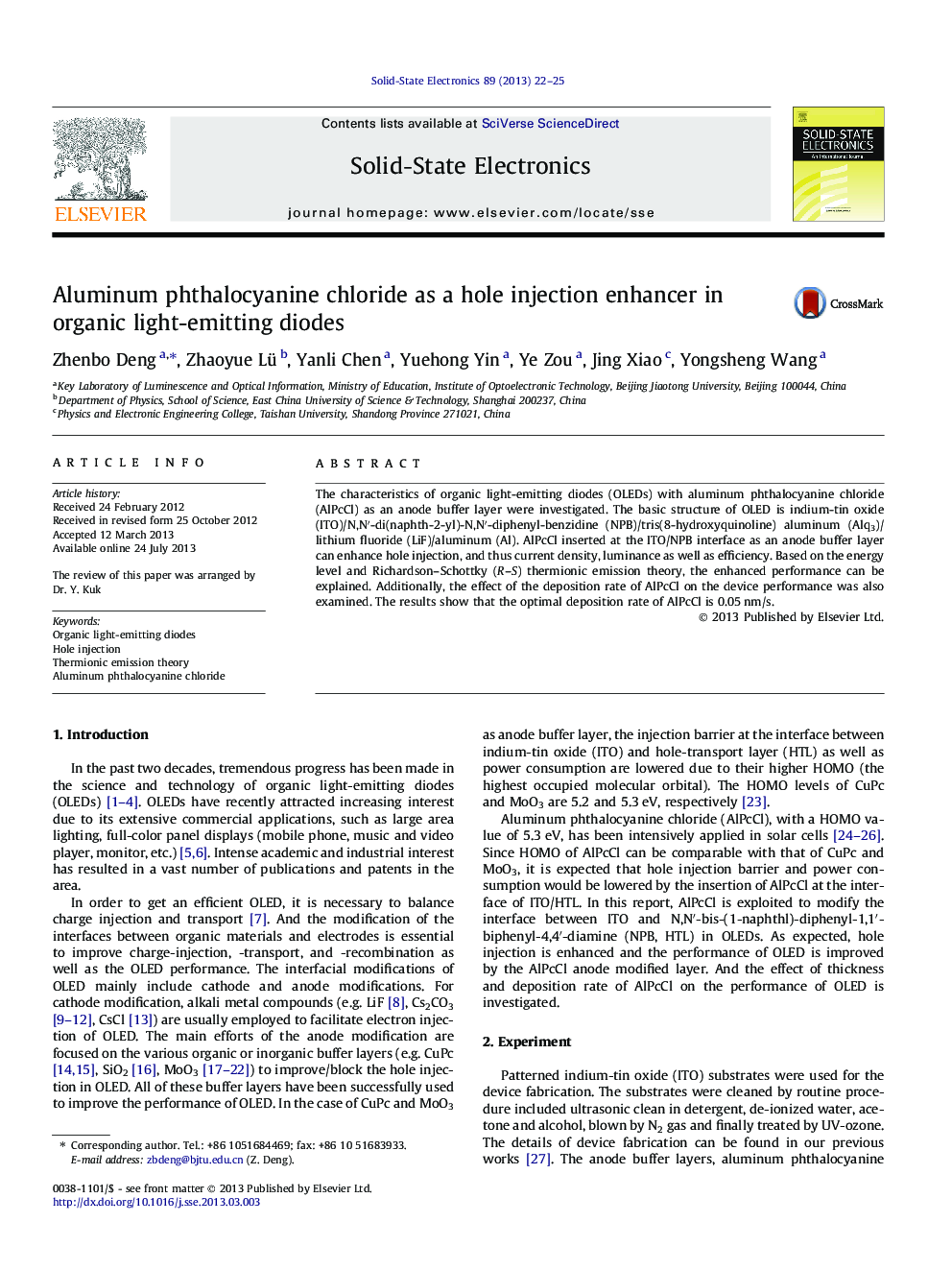| کد مقاله | کد نشریه | سال انتشار | مقاله انگلیسی | نسخه تمام متن |
|---|---|---|---|---|
| 752748 | 1462243 | 2013 | 4 صفحه PDF | دانلود رایگان |

• AlPcCl as an anode buffer layer was introduced in OLED.
• The performance of OLED with AlPcCl is superior to that of the device without AlPcCl.
• The enhanced performance is explained by energy level and thermionic emission model.
• The effect of the deposition rate of AlPcCl on the device performance was examined.
• The optimal deposition rate of AlPcCl is 0.05 nm/s.
The characteristics of organic light-emitting diodes (OLEDs) with aluminum phthalocyanine chloride (AlPcCl) as an anode buffer layer were investigated. The basic structure of OLED is indium-tin oxide (ITO)/N,N′-di(naphth-2-yl)-N,N′-diphenyl-benzidine (NPB)/tris(8-hydroxyquinoline) aluminum (Alq3)/lithium fluoride (LiF)/aluminum (Al). AlPcCl inserted at the ITO/NPB interface as an anode buffer layer can enhance hole injection, and thus current density, luminance as well as efficiency. Based on the energy level and Richardson–Schottky (R–S) thermionic emission theory, the enhanced performance can be explained. Additionally, the effect of the deposition rate of AlPcCl on the device performance was also examined. The results show that the optimal deposition rate of AlPcCl is 0.05 nm/s.
Journal: Solid-State Electronics - Volume 89, November 2013, Pages 22–25